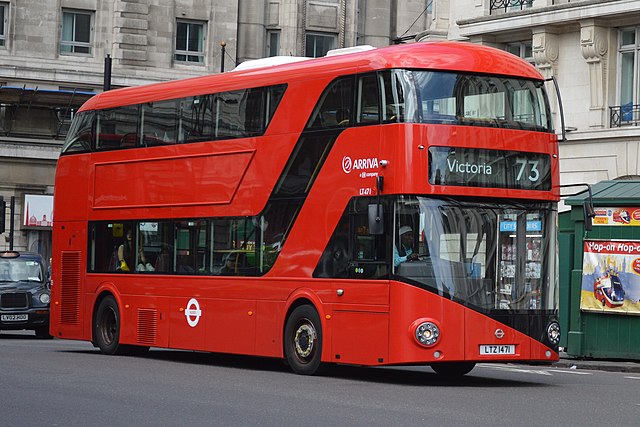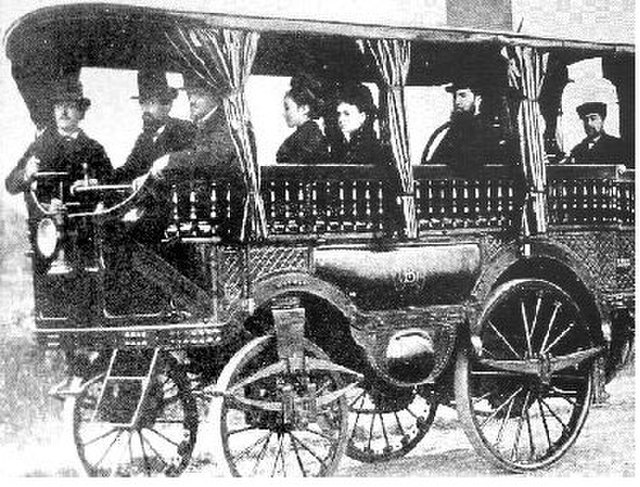High-floor describes the interior flooring of commuter vehicles primarily used in public transport such as trains, light rail cars and other rail vehicles, along with buses and trolleybuses. Interior floor height is generally measured above the street surface or above the top of the rail. High-floor designs usually result from packaging requirements: mechanical items such as axles, motors, crankshafts, and/or transmissions, or luggage storage spaces are traditionally placed under the interior floor of these vehicles. The term is used in contrast with low-floor designs, which offer a decreased floor and entry height above the street surface. Since low-floor designs generally were developed after high-floor vehicles, the older high-floor design is sometimes also known as conventional or the “traditional” design.
In this high-floor trolleybus, four steps must be negotiated during entry and exit.
High-floor coach, giving three steps for entry and exit.
High floor train in Russia
High floor train with ramp in Brisbane
A bus is a road vehicle that carries significantly more passengers than an average car or van, but less than the average rail transport. It is most commonly used in public transport, but is also in use for charter purposes, or through private ownership. Although the average bus carries between 30 and 100 passengers, some buses have a capacity of up to 300 passengers. The most common type is the single-deck rigid bus, with double-decker and articulated buses carrying larger loads, and midibuses and minibuses carrying smaller loads. Coaches are used for longer-distance services. Many types of buses, such as city transit buses and inter-city coaches, charge a fare. Other types, such as elementary or secondary school buses or shuttle buses within a post-secondary education campus, are free. In many jurisdictions, bus drivers require a special large vehicle licence above and beyond a regular driving licence.

A New Routemaster double-decker bus, operating for Arriva London on London Buses route 73 (2015)
A New Flyer trolleybus operated by the Toronto Transit Commission in 1987
An early horse-drawn omnibus from mid-nineteenth century
Amédée Bollée's L'Obéissante (1875)








